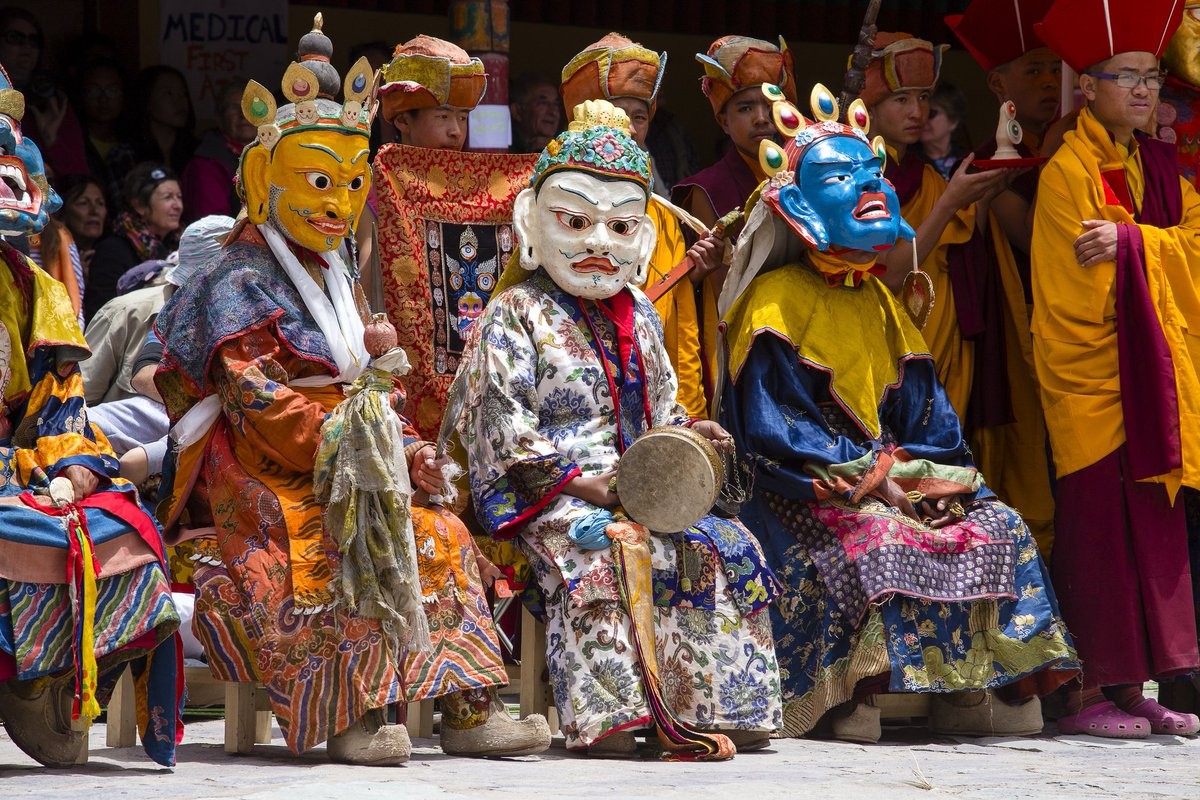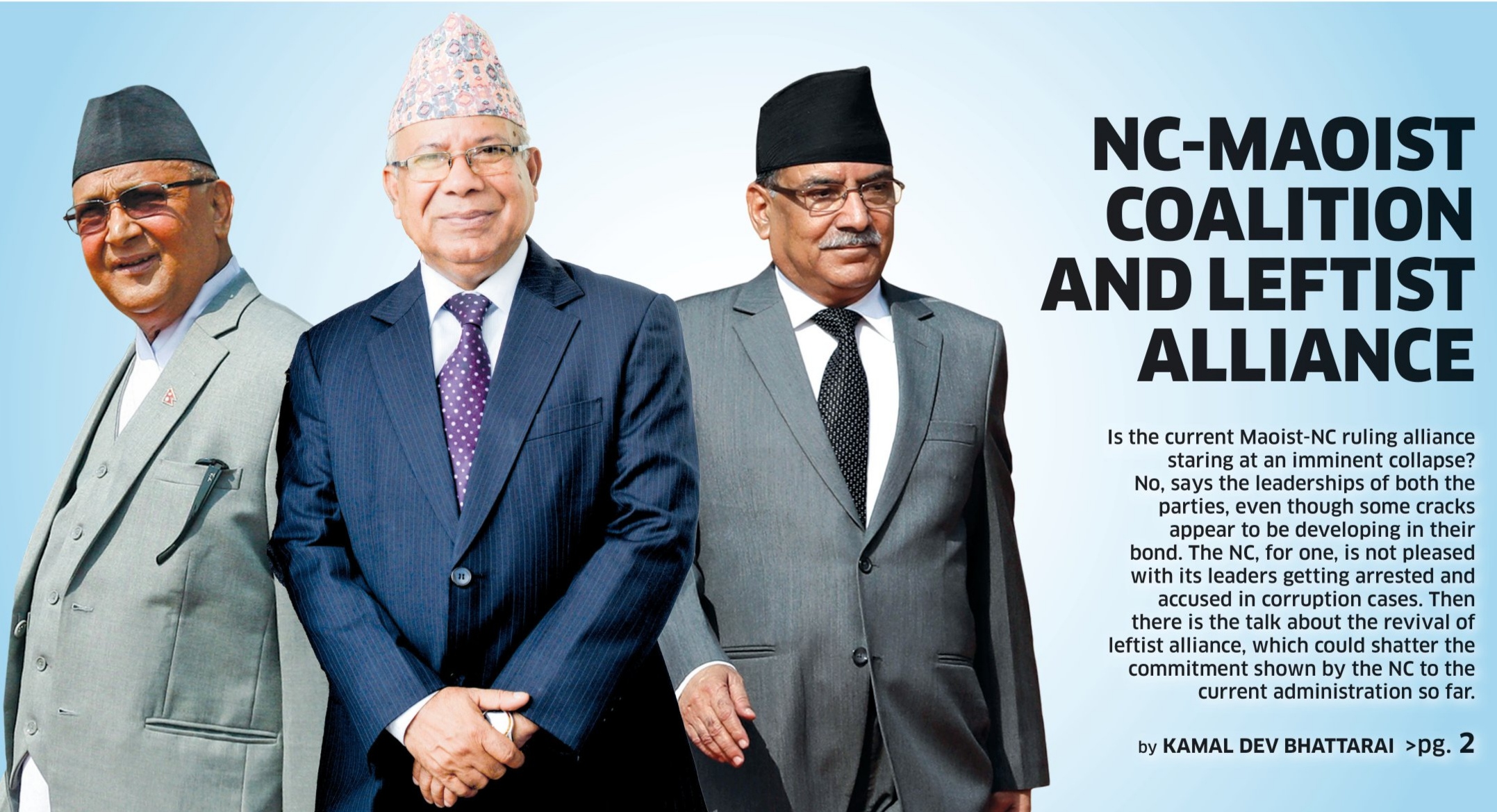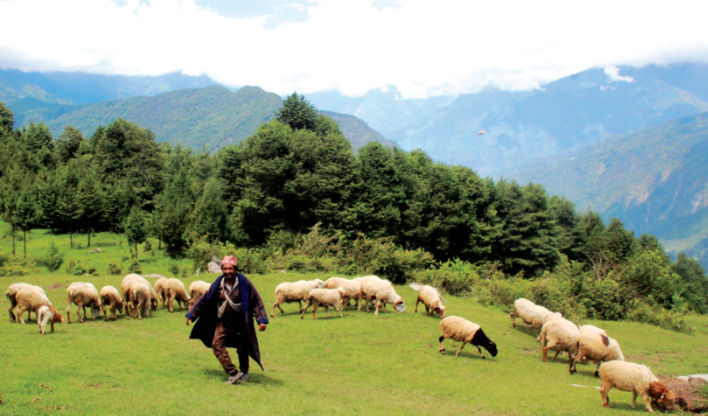Govt slashes foreign grants and loans targets
Low capital spending on donor-funded projects and a decline in reimbursement from donors have forced the government to readjust the target for foreign grants and loans. The government has targeted to receive Rs 2,97.71 billion in foreign aid in the current fiscal year 2022/23. However, as things stand, meeting the target will be a daunting task for the government with only 11.61 percent of the targeted amount in foreign aid has been received during the first half, according to the mid-term review of the current fiscal year's budget. According to the review report, only Rs 34.57 billion including both grants and loans were received in the first six months of the current fiscal year. The country received grants amounting to Rs 8.12 billion (14.63 percent of target) and loans of Rs 25.46 billion (10.92 percent of target). At a time when the government has been struggling to meet the revenue target, failure to receive foreign aid as targeted will add to the pressure on the government’s treasury. As a result, the government downsized the budgetary allocation by 14 percent through the mid-term review of the budget. In the review, the target of foreign aid has also been reduced to Rs 38.45 billion in foreign grants, which was earlier Rs 55.45 billion. Likewise, the government expects to receive only Rs 170.53 billion in foreign loans or 70.39 percent of the initial target of Rs 242.26 billion. The finance ministry's statistics show in the last fiscal year, the government received only 45.65 percent of targeted foreign grants and 46.17 percent of target foreign loans. In the mid-term review report of the current fiscal year's budget, the main reason behind the sluggishness in receiving foreign aid is the low capital spending of the donor-funded projects. “The government receives reimbursement from the donors based on the capital spending in donor-funded projects. The impact of the low capital spending resulted in low reimbursement from the donors,” the report says. In terms of receiving foreign aid, it is not the situation of the current fiscal year; the government has hardly been able to receive foreign aid as targeted in the previous years too. In fact, expenditure under the heading of foreign aid usually remains poorer compared to domestic resources. For example, the government spent just 45.46 percent allocated budget for projects to be implemented with foreign grants in the last fiscal year, according to the Financial Comptroller General Office (FCGO). Likewise, only 47.4 percent of the allocated amount under the heading of foreign loans was spent in the last fiscal year. The government’s total expenditure stood at 88.81 percent of the allocated amount, according to the FCGO. “The expenditure from the government’s own resources usually remains higher because its resources are spent in recurrent expenditure heavily,” said a senior FCGO official, adding, "As most of the resources under foreign aid are spent for development activities, low capital expenditure hampers the overall spending of foreign aid.”
Bibeksheel Sajha plans a comeback
Bibeksheel Sajha Party is regaining its Bibek (wisdom) after a long hiatus, it appears. Once considered a torchbearer of alternative politics in a country fed up with under-performing mainstream political parties, this party split more than once due, mainly, to internal contradictions. Now, it is planning to stage a comeback from the footnotes of Nepal’s contemporary political history. On Saturday, the general convention held in Kathmandu elected Samikchya Baskota Chairperson of the party unanimously, along with Ranju Darshana as its General Secretary. Prakash Chandra Pariyar, Milan Pandey and Bimala Adhikari are vice-chairs of the party. But for others seeking to be part of the party’s apex body, it may not be a cakewalk. In all likelihood, those aspiring for 61 central committee member positions in the party will have to contest elections to land these berths. For bringing the party back from the brink, a number of members, who had ditched the party on different grounds, returned to the party fold. This move also facilitated the general convention. Like in the fashion of the Aam Aadmi Party in India, Bibeksheel Sajha was expected to make its presence felt in Nepal. But that did not happen as the party landed in splitsville more than once due to conflicts in its rank and file. The party founded on July 26, 2017 after the merger of Sajha Party and Bibeksheel Party split on January 11, 2019, only to merge again on December 09, 2020 under the joint leadership of Rabindra Mishra and Ujwal Bahadur Thapa. The lessons from the past are not lost on the party, that is what the new leadership says. Talking to Annapurna Express about the challenges and plans to tackle them, Baskota and Darshana shared that leading the party was not an easy task, but they were ready to take up the challenge. “We have come to this point after multiple splits and reunions. Crevices have formed at all three levels of the party structure. We need to repair damaged structures,” said Ranju Darshana, general secretary of the party. “We are aware of past debacles. We must make the party stronger if we are to bring about desired changes in the country. We plan to form teams in provinces, districts, wards and at local levels. We will be working to promote leadership at every level,” added Darshana. The importance of inter-party dialogue is not lost on the new leadership. “Bibeksheel Sajha Party is committed to starting dialogues with different parties,” Darshana said. She also stressed the need to make party members financially independent by promoting entrepreneurship. The new leaders are aware of the hard work required to make the party stronger by winning hearts and minds of the members and the public at large. “We are aware that members may have some ideological differences. But we need to sort out these differences rather than letting them destroy the party. We have learned this lesson from the past,” said Baskota. The party aims to regain its strength (lost after the split) with leaders planning to visit villages, wards and local areas for the same. What does the party plan to do next? “We will conduct provincial and district conventions within a year for the leadership,” said Baskota. The party also aims to hold dialogues, discussions and share forums with the public, expand its organizational base, work against corruption and prepare for the elections.
What does Kwatra’s visit mean for Nepal?
Indian Foreign Secretary Vinay Mohan Kwatra is arriving in Kathmandu on Monday on a two-day official visit, at the invitation of his Nepali counterpart Bharat Raj Paudyal. Kwatra is scheduled to meet Prime Minister Pushpa Kamal Dahal and other senior government officials to discuss various bilateral matters such as connectivity, power trade, agriculture, health and culture. The Indian foreign secretary is also expected to extend an invitation to Prime Minister Dahal for an official India visit. Dahal plans to visit India soon after the presidential election, scheduled for March 9. The Indian side has said the visit is in keeping with the tradition of regular high-level exchanges between the two countries and the priority India attaches to its relations with Nepal under its neighborhood first policy. It added that the cooperation between the two countries has strengthened in recent years, with several major infrastructures and cross-border connectivity projects completed with India’s assistance. Nepal’s Foreign Ministry said Kwatra’s trip is in continuation of the regular exchange of visits between the two friendly neighbors. The visit will be an opportunity to further expand and deepen Nepal-India ties, the ministry added. Kwatra’s visit comes on the heels of a series of high-level visits from the US. In this context, ApEx asked individuals attached to foreign affairs, politics and business what they think of and expect from the Nepal visit of a top official from India. Show diplomatic maturity Deepak Kumar Upadhyay, former ambassador Indian Foreign Secretary Vinay Mohan Kwatra’s Nepal visit is regular and routine. But the visit is taking place at a time when Nepal’s domestic politics is passing through a sensitive time, particularly due to the upcoming presidential vote. While I personally think that Kwatra’s main mission is to hand over an invitation letter to Prime Minister Pushpa Kamal Dahal for an official India visit, it would be good if the two sides also presented their respective agendas in a free and frank way. But I see lack of immaturity on both sides when it comes to dealing with bilateral issues that demand regular, in-depth and serious dialogue. Some bilateral issues between Nepal and India have remained unaddressed for a long time. This only shows a lack of maturity on both sides. I hope for matured diplomacy from both Nepal and India to overcome the outstanding issues. Push agendas clearly Bhek Bahadur Thapa, foreign affairs expert Visits to Nepal by high-level foreign officials have increased in recent times. Big countries are showing interests in the internal political situation of Nepal. Regarding the Indian foreign secretary’s visit, Nepal and India have always had cordial and close ties. But there are some outstanding issues between the two countries, and they must be discussed during this visit. Nepal should put its agenda clearly and strongly. Prioritize trade issues Rajan Bhattarai, UML leader I think the purpose of the Indian foreign secretary’s Nepal visit is to extend an invitation to Prime Minister Pushpa Kamal Dahal for his visit to India. I do not think there will be any concrete discussions on bilateral issues. But, right now, we have some burning issues with India. We have a swollen trade imbalance with India and our foreign reserves are not in good shape. Nepal should take up these issues related to the economy with the Indian foreign secretary. Other priority issues that need attention are the EPG report, border disputes and ensuring smooth energy trade between the two countries. Don’t expect a breakthrough Lokraj Baral, former ambassador Traditionally, foreign secretary of India takes a trip to neighboring countries after assuming office. So, this visit is by and large a routine affair. There are already several bilateral agencies between Nepal and India, including the one formed to review bilateral development projects. Foreign Secretary Kwatra is likely to get first-hand information on the current political situation in Nepal, but I doubt there will be any major breakthrough on bilateral issues, least of all on the border dispute. Even if the two sides were to touch upon the issue, it will most likely be postponed for future deliberations. Seek more air routes Shreejana Rana, president, Nepal-India Chamber of Commerce and Industry Nepal and India should discuss ways to improve air connectivity. Until now, only one entry point via Simara is made available for Nepal-bound flights coming through Indian air routes. To make the airfare more competitive, other entry points should be made available as well. At least Biratnagar in the east, and Bhairahawa, Nepalgunj and Dhangadhi in the west should get entry permits for Nepal-bound flights. As the Nepal government provides permission to Indian private airlines to enter Nepal, the Indian government should also provide permits to Nepali private airlines to fly to different Indian cities. There should be reciprocal arrangements vis-a-vis air connectivity.
Dhanajay Tripathi: People-to-people linkages bedrock of Nepal-India ties
Dhanajay Tripathi chairs the Department of International Relations at the South Asian University. He closely follows South Asian politics. Narendra Thapa talked to him about wider aspects of Nepal-India relations. How do you see the recent government change in Nepal in the context of India-Nepal relations? India-Nepal relations are not regime based, these are based on socioeconomic, cultural and people-to-people connections. Governments may come and go. The new government has shown its keenness, and Prachanda has been positive toward India. What does India expect from this coalition? India wants to maintain a healthy relationship with all South Asian countries, and Nepal holds a very special place in the Indian foreign policy. Nepal shall not be seen merely in terms of political ties or regime changes. Despite witnessing difficult times, this relationship has remained smooth over the years. Every Indian—and not just the government—expects the coalition government to be friendly toward India. Dahal is familiar with the political and social milieus of India; he knows this country so well. India played a very vital role during his struggle against the monarchy. Against the backdrop of these linkages, every Indian wants an open, friendly Nepal. A few people in India believe that Dahal has sometimes taken positions against India’s expectations. Looking at Dahal’s overall political position, though, I feel that the position he has taken should not be a cause for concern. More than Dahal, I feel that KP Oli, at times in a very rhetorical manner, has taken positions that cannot be considered quite friendly toward India. The China factor is of course, but it is everywhere. To understand it, you have to look at it from the Chinese perspective and not from the South Asian perspective. The Chinese have money, they want to invest in South Asia. China is a very big power, and it has very good relations with Western countries and many others. So, why can’t it have good ties with South Asian countries? I do not read China investing in a South Asian country as an anti-India thing. Of course, there will be competition between the two giants, and everybody is aware of it. How hopeful are you about the resolution of long-standing irritants like border disputes, security issues, and Nepal’s expectations of a more favorable access for its goods in the Indian market? There is nothing that cannot be resolved between India and Nepal, because it is not merely the politics that connects us. Let me bring a very recent example regarding the construction of the statues in Ayodhya. When two Shila sourced from Nepal were arriving, it was like fanfare in India. This is but one aspect of India-Nepal relations, which often figures in our academic and intellectual discussions. We know there are very strong people-to-people connections. There are issues, particularly those related to the border, which have become quite prominent from 2015 onward. Both sides have shown seriousness to resolve these issues through dialogue. When it comes to the India-Nepal border, it’s an open and porous border. I think both countries are in a much better place to resolve this dispute. Let me explain it a bit. If you look at the India-Pakistan border and India-Bangladesh border, it’s a different story altogether. These are very securitized borders, so the resolution of issues is very difficult, as a lot of political contestation is involved. As for the India-Nepal border, it requires willingness on the part of both sides to resolve it. India should think of a better way to integrate South Asian economies with its market and allow access to Nepali goods in the Indian market. Recent narratives from the Indian scholarly community and media propagate that Chinese activities are on the rise in Nepal. How do you see this? This is a critical question for all South Asian countries. China is investing in all South Asian countries, including Nepal, which also has seen a surge in China’s FDI. Nepal is also part of the BRI project. The Indian strategic community sees it all with a bit of skepticism. Nepal is India’s next-door neighbor and some of these projects will give China access to areas close to the Indian borders. The Pokhara (international) airport is a case in point. China is part of the project (in Pokhara), which is not that far from Gorakhpur on the Indian side. People with a strategic outlook look at these kinds of activities with alarm. This is because India and China, despite good trade relations, have failed to resolve political issues, particularly the border issues. The Indian people may look at increasing Chinese investment in Nepal’s infrastructure sector in a different way, though Nepal has made it clear repeatedly that it wants to act as a bridge between India and China. I don’t feel there are many takers of this position in India. Nepal has to decide what kind of bridge it can be. Nepal and India have to think quite a lot when it comes to China’s involvement. There is suspicion about this whole thing, but I also have faith in people-to-people and social connections between the peoples of the two countries. What are the domains that need improving in terms of government-to-government ties? One of the things we should be doing is focusing more on the people. Somehow over the years, we have seen that young generations on either side of the border have misunderstandings on a variety of issues. This needs to be resolved and both sides need to promote people-to-people contacts. Border issues come second. Political rhetorics hardly help. The two countries should work to resolve the disputes. Market integration is the third important thing. India should think in terms of its South Asia policy with a view to integrating it with the markets of other countries and vice-versa. Fourth, India must look into development projects that it has supported in South Asian countries, including in Nepal. To conclude, I have seen in the last couple of years a shift in Nepal’s position toward China. This change has happened in the last 2-3 years, for whatever reason. In the wake of the Sri Lankan crisis, China is facing questions regarding the utility of its investment in the region. It’s not that things will remain the same. As for foreign policy, it will keep changing and India-Nepal relations will change accordingly. But people-to-people relations will remain the pillar of this relationship. There is a very strong people-to-people connection between these two countries, and we should not ignore this in any of our discussions.



















